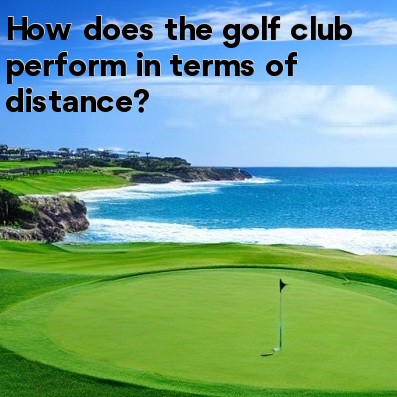
How does the golf club perform in terms of distance?
When it comes to golf, one of the most important factors that golfers consider is the distance they can achieve with their shots. The distance a golfer can hit the ball depends on various factors, with the golf club being a key element. Let's take a closer look at how different golf clubs perform in terms of distance:
- Driver: The driver, also known as the 1-wood, is designed for maximum distance off the tee. It has a large clubhead and a long shaft, which allows golfers to generate maximum swing speed. Due to its design, the driver is capable of producing the longest shots among all clubs. Professional golfers can hit the ball over 300 yards, while average golfers can generally achieve distances between 200 and 250 yards.
- Woods: Woods, including the 3-wood and 5-wood, are also designed for distance. Although they have smaller clubheads and shorter shafts compared to the driver, they still have the ability to produce long shots. The 3-wood is often used for fairway shots when a golfer wants to achieve significant distance without sacrificing accuracy. Golfers can hit the ball with a 3-wood around 250 yards, and the 5-wood can achieve distances of approximately 200 yards.
- Hybrids: Hybrids, also known as utility clubs, are a combination of irons and woods. They are designed to provide forgiveness and distance, making them versatile clubs for different situations on the course. Depending on the loft and design of the hybrid, golfers can achieve distances similar to those obtained with their fairway woods. As hybrids are often easier to hit than long irons, many golfers prefer them for maximizing distance and control.
- Irons: Irons are the clubs that golfers use for shots in the fairway and around the green. While they may not produce the same distance as woods, irons provide accuracy and control. The lower-numbered irons, such as the 3-iron and 4-iron, are designed for longer shots and can achieve distances between 160 and 200 yards. The higher-numbered irons, such as the 7-iron and 9-iron, are used for shorter distances and accurate approach shots to the green.
- Wedges: Wedges are clubs that golfers use for shots close to the green. They are specifically designed for high loft and control, rather than distance. The distance achieved with wedges depends on the type of wedges, such as pitching wedge, sand wedge, or lob wedge. Typically, pitching wedges can produce distances of around 100 to 120 yards, while sand wedges and lob wedges are designed for precise shots within shorter distances.
- Putter: The putter is the club used for rolling the ball into the hole on the green. It is not designed for distance but for accuracy and control. Putters are generally used within short distances, often less than 50 feet.
It's important to note that the distance achieved with each club can vary depending on the golfer's swing speed, technique, and other individual factors. Additionally, golfers may have different club preferences and abilities, which can impact the distance they achieve with each club.
To maximize your distance, it's recommended to get custom club fitting and lessons from a golf professional. They can help you determine the best club options for your game and provide guidance on optimizing your swing for maximum distance.
In conclusion, the golf club you choose plays a significant role in determining the distance you can achieve with your shots. Drivers and woods are designed for maximum distance, while irons and wedges prioritize accuracy and control. Understanding the characteristics of each club will help you make better club selections and improve your overall performance on the course.





